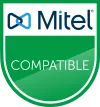- Untertitel:
Support nurses through targeted alarm distribution
- Teasertext:
Medical device provides more relevant alarms and helps reduce 'alarm fatigue'
- Titel:
Benefits of targeted alarm distribution
- Vorteile:
- Bild:
 , Zwischentitel:
Relieving the burden on nursing staff, Text:
, Zwischentitel:
Relieving the burden on nursing staff, Text:
- The risk of mental overload and desensitized by too many alarms decreases.
- Unnecessary interruptions in patient care workflows are reduced.
- Nursing staff can work more efficiently, more attentively, more focused, and more autonomously.
- Bild:
 , Zwischentitel:
Faster and more appropriate help for the patients , Text:
, Zwischentitel:
Faster and more appropriate help for the patients , Text:
- Patients who need immediate help receive it more quickly. Patient care is improved.
- The satisfaction of patients and their relatives with the overall quality of care increases.
- Bild:
 , Zwischentitel:
More efficiency and security for the clinic, Text:
, Zwischentitel:
More efficiency and security for the clinic, Text:
- The stress level of nursing personnel reduces, effectively lowering sickness rates, absenteeism, and staff fluctuation.
- All alarm processes are logged in detail – This provides an effective basis for the optimization of processes, but also for legal certainty.
- Titel:
This is how you provide more relevant alarms and better patient care
- PS Elemente:
- Bild:
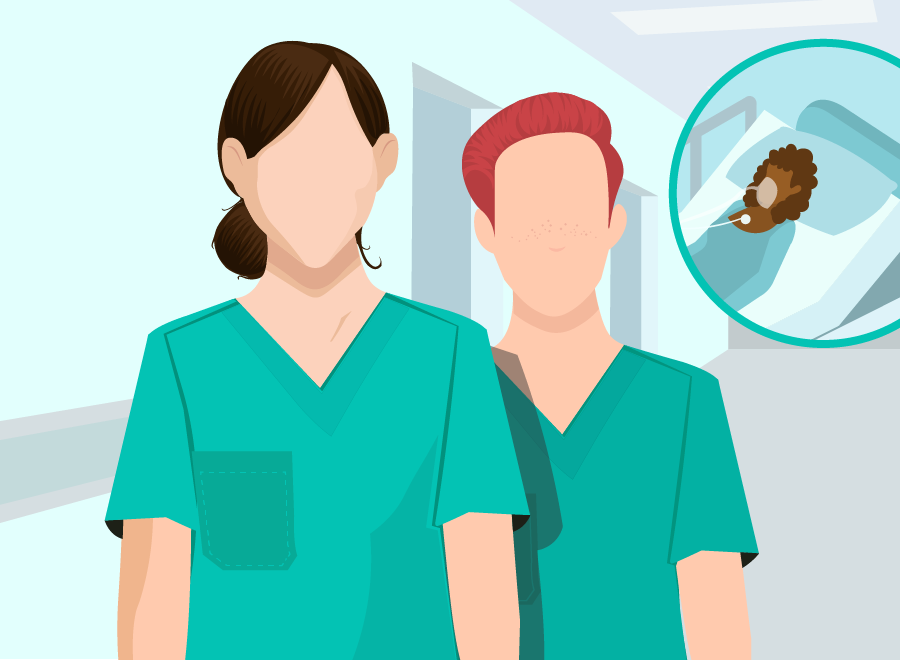 , Zwischentitel:
Her patient needs constant monitoring, Text:
, Zwischentitel:
Her patient needs constant monitoring, Text:
Recovering from recent heart surgery, Mrs. Kirkland still suffers from acute cardiac arrhythmias.
In order to keep a close eye on her status, nurse Irene was assigned to her specifically, nurse Clara acting as her deputy.
- Bild:
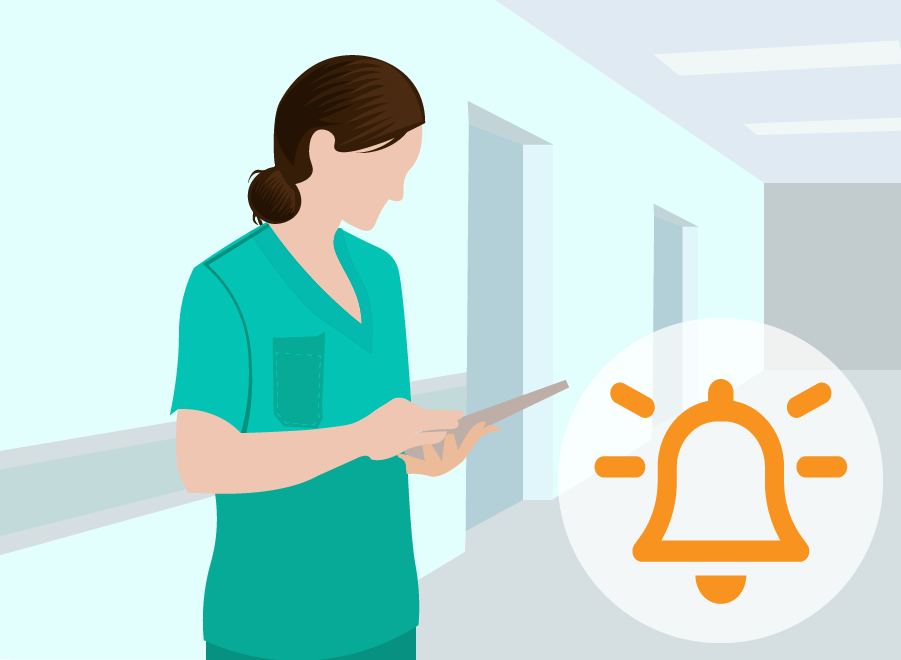 , Zwischentitel:
Wherever she is – she receives every alarm relevant to her, Text:
, Zwischentitel:
Wherever she is – she receives every alarm relevant to her, Text:
In the course of the morning, Mrs. Kirkland's palpitating heart causes a series of alarms. These are transmitted to nurse Irene's alarm receiver in a targeted way, letting her see directly on the display the origin and the type of each individual alarm.
Thanks to this mobile alerting process, she doesn't always need to be near the patient, leaving her free to tend to other tasks in the meantime.
- Bild:
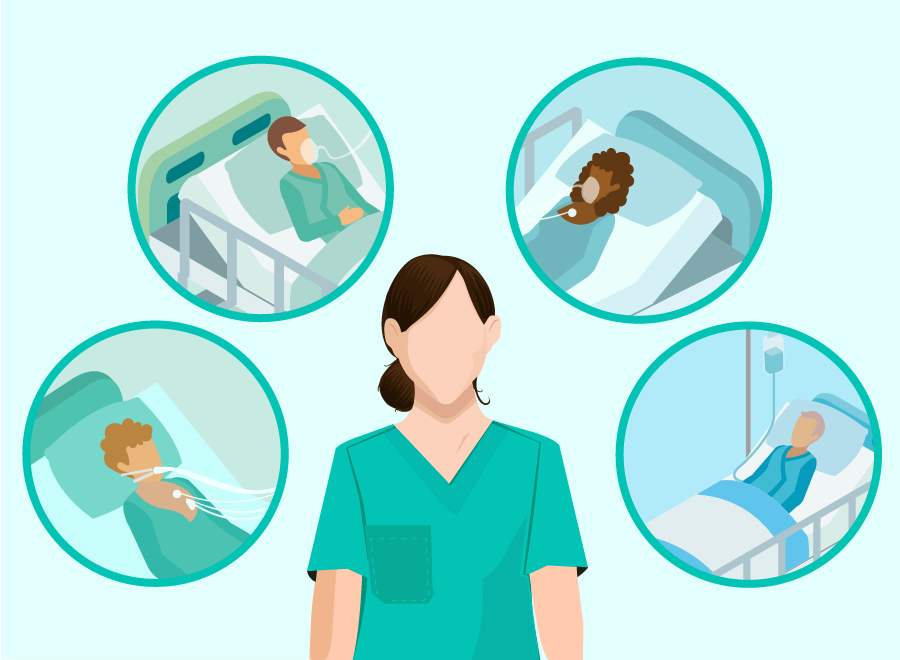 , Zwischentitel:
She has many patients – and everything under control, Text:
, Zwischentitel:
She has many patients – and everything under control, Text:
A couple of rooms down the hall, an ECG electrode has come off due to the fitful sleep of Mr. Carlson. This sets off a signal tone on her alarm receiver.
A technical alarm message is shown on the display: „Electrode off“, giving her a clear identification of her patient. Nurse Irene knows that this can wait for a brief moment, so she might finish the preparation of today's medication.
- Bild:
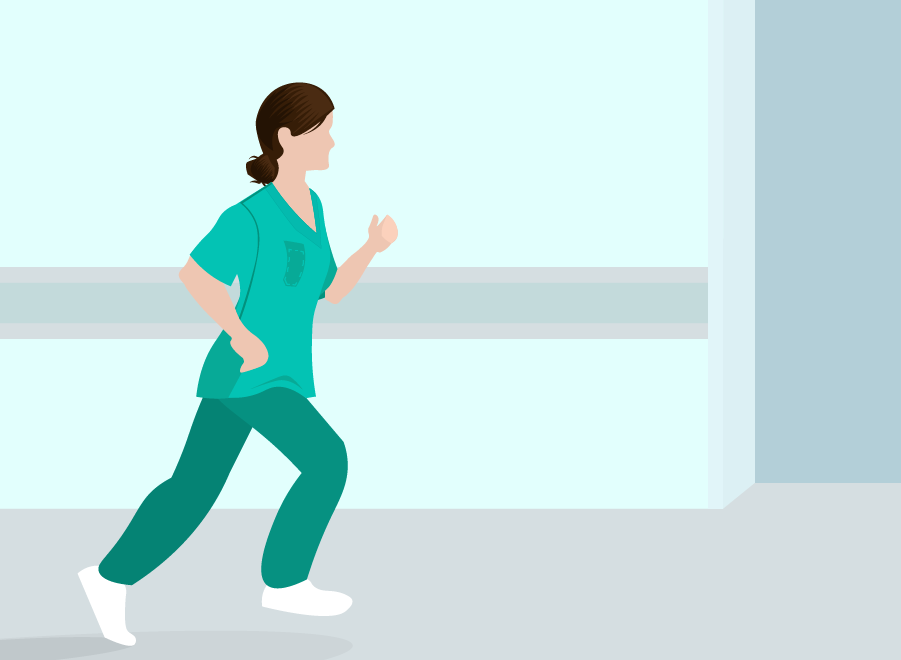 , Zwischentitel:
She knows exactly when and where action is required, Text:
, Zwischentitel:
She knows exactly when and where action is required, Text:
When more electrodes fall off due to Mr. Carlson's movements and a heart alarm is triggered, she is alerted by a special alarm tone. A corresponding message appears on her display.
Nurse Irene postpones the rest of the preparation until later and instead heads directly for Mr. Carlson's room.
- Bild:
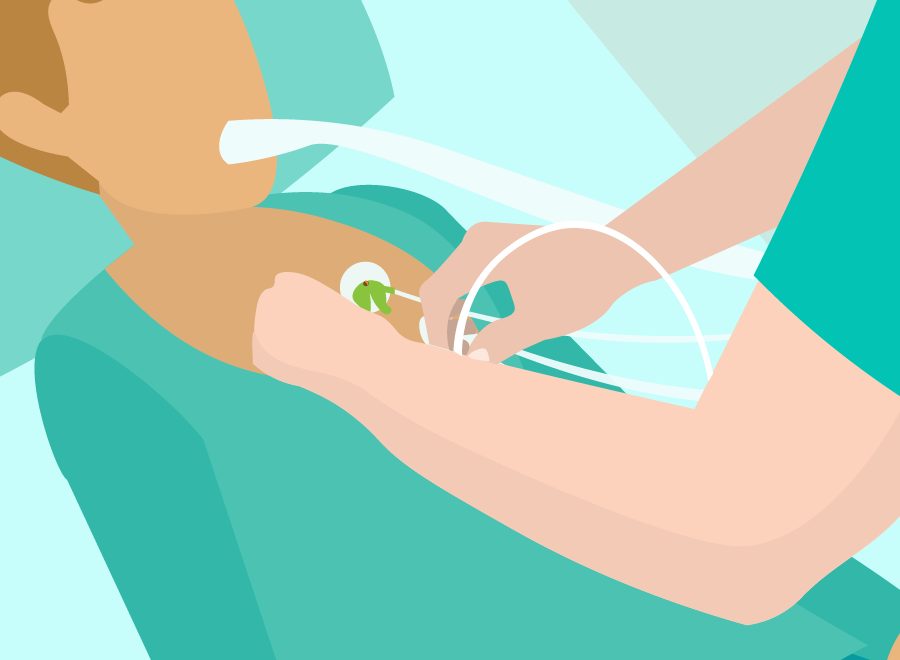 , Zwischentitel:
But what if she is currently tied up?, Text:
, Zwischentitel:
But what if she is currently tied up?, Text:
While she is correctly reattaching the electrodes on Mr. Carlson's body, she receives another medium-priority alarm from Mrs. Kirkland's patient monitor with a corresponding text message on the display.
But since she is already busy taking care of Mr. Carlson's loose electrodes, she would like to refer the alarm to her deputy, nurse Clara, and presses the appropriate key to decline.
- Bild:
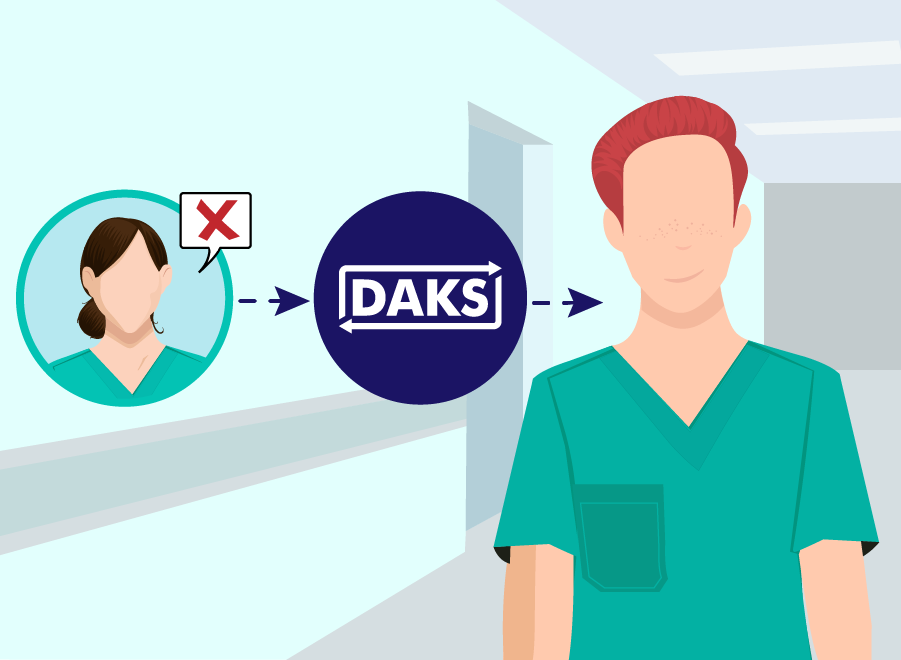 , Zwischentitel:
Then DAKS simply forwards the task to another nurse, Text:
, Zwischentitel:
Then DAKS simply forwards the task to another nurse, Text:
With this, the alarm is instantly forwarded to nurse Clara, who at this time is busy filling in a form. She immediately hurries to Mrs. Kirkland, taking over care of the patient.
Nurse Irene doesn't need to interrupt her tending to one of her patients, nor does she need to weigh priorities. Instead, she can quickly and effectively refer the task to her colleague.
- Verlinkte Artikel:
Patient monitors and other medical devices use acoustic alarms to signal an acute need for action on the part of monitored patients. The large number of alarms and frequent workflow interruptions can lead to mental overload or even desensitization ('alarm fatigue') among nursing staff.
With DAKSmed, these alarms can be distributed to the mobile alarm receivers of assigned caregivers in a targeted manner. Based on the alarm types and priorities displayed, nursing staff can better evaluate when and where their immediate action is required, regardless of their current location.
- Untertitel:
Personal security in dangerous workplaces with Personal Alarm Signal System (PNA)
- Teasertext:
Certified personal security for lone workers in dangerous areas
- Titel:
Benefits of a personal security system with DAKS
- Vorteile:
- Bild:
 , Zwischentitel:
Increased security for employees, Text:
, Zwischentitel:
Increased security for employees, Text:
- Employees who have to do dangerous jobs unassistedly know that they can rely on the safe and detailed alerting with DAKS and that they can be sure of quick help.
- With DAKS, the emergency workflow can be practiced and optimally prepared. The logging of the entire alerting procedure makes the process evaluable and provides an effective basis for its optimization.
- Bild:
 , Zwischentitel:
Increased security for those responsible, Text:
, Zwischentitel:
Increased security for those responsible, Text:
- With its DGUV-certificate, DAKS fulfills all requirements for Lone Worker Protection
- The predefined alerting processes and emergency conferences help to ensure that the right helpers arrive at the right place faster.
- This makes dangerous jobs more attractive and supports employers in their responsibility to ensure the safety and protection of their employees or contractors.
- Security service providers, such as object protection, can also use this automated personal security system in combination with other monitoring systems.
- Titel:
This is how you protect lone workers in dangerous workplaces
- PS Elemente:
- Bild:
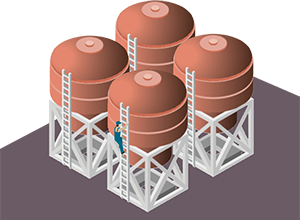 , Zwischentitel:
The cleaning of confined containers is dangerous, Text:
, Zwischentitel:
The cleaning of confined containers is dangerous, Text:
Regular monitoring methods, e.g. by video, cannot be installed in confined containers such as tanks and silos. The job requires not only additional oxygen and protective equipment, but also high concentration. Due to the risk of slipping, accidents in which the affected person may lose consciousness can easily occur. If a protective suit or oxygen tank is damaged, the situation can be life-threatening for the injured person.
- Bild:
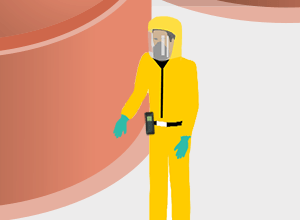 , Zwischentitel:
A mobile device with sensors protects the employee, Text:
, Zwischentitel:
A mobile device with sensors protects the employee, Text:
Workers with such dangerous cleaning jobs carry certain Wi-Fi/DECT terminals with sensors. Position sensors trigger an alarm when the device is in a lying position for a predetermined period of time. Other sensors can cause alarms such as escape, panic, man-down or pull-cord alarms. In addition, the employee can deliberately set off an alarm via a red alarm button or be regularly asked for confirmation by means of pre-alarms. If this confirmation is not given, an alarm is triggered.
- Bild:
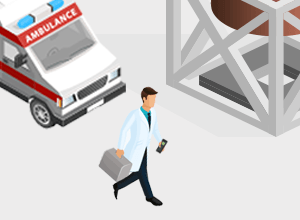 , Zwischentitel:
DAKS triggers predefined alerting processes, Text:
, Zwischentitel:
DAKS triggers predefined alerting processes, Text:
If one of these different alarms occurs, the DAKS alarm server triggers predefined alerting processes appropriate to the situation: It starts an automatic broadcast call to all predefined helpers and, with a simultaneous locating process, directs them directly to the injured person via a message displayed on the terminal. In addition, DAKS can establish a conversation with the affected person or connect all those involved in the rescue to a spontaneous emergency telephone conference.
- Bild:
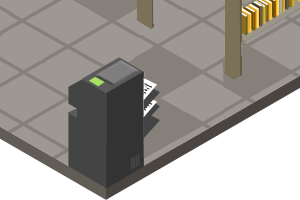 , Zwischentitel:
The entire alerting process is documented, Text:
, Zwischentitel:
The entire alerting process is documented, Text:
DAKS provides detailed logging of all alarm processes and thus supports the complete documentation of all emergency situations that have arisen. This makes the entire process evaluable and provides an effective basis for the optimization of processes, but also for legal certainty.
- Verlinkte Artikel:
Working alone with potential hazards is part of everyday life in many areas, for example for security personnel on night-time patrols, product and process controls in cold rooms, boilers or low-oxygen locations, or maintenance and cleaning work in confined containers.
If dangerous work is carried out by one person alone, the employer is obliged to ensure suitable technical and organisational personal safety precautions. The employers' liability insurance associations provide relevant guidelines to ensure that in an emergency the necessary assistance or rescue can be called and directed to the place of action in time.
In case of an increased hazard, the use of a Personal Alarm Signal System according to the German DGUV-112-139 is recommended; in case of critical hazards, it is required. It must also be possible to trigger the rescue chain if the injured person is unable to act and no one has noticed the accident.
- Untertitel:
Automatically monitor the elevator emergency call and automate emergency procedures
- Teasertext:
Answer emergency calls reliably and automate emergency processes | Digitalization in Facility Management
- Titel:
Advantages of the elevator emergency call with DAKS
- Vorteile:
- Bild:
 , Zwischentitel:
Safety for elevator users, Text:
, Zwischentitel:
Safety for elevator users, Text:
- No emergency call goes unanswered: thanks to automation and escalation rules with DAKS, all the necessary helpers are reached.
- Because DAKS contacts all those involved automatically and reliably, help is provided as quickly as possible.
- All tasks that arise are included automatically – this means that not only external companies, but also everyone in the building knows about the stuck elevator and can contribute to the successful rescue.
- Bild:
 , Zwischentitel:
Convenience and Cost Saving for those Responsible, Text:
, Zwischentitel:
Convenience and Cost Saving for those Responsible, Text:
- Depending on the emergency plan, DAKS can be used to individually define who needs to be part of the broadcast call.
- DAKS independently performs regular tests - of both analog and digital intercom terminals.
- Thanks to the self-check of the system, no additional staff is needed and errors are reduced.
- All broadcast calls and tests are logged by DAKS.
- Titel:
This is how you ensure accessibility and fast help in the event of an elevator emergency call
- PS Elemente:
- Bild:
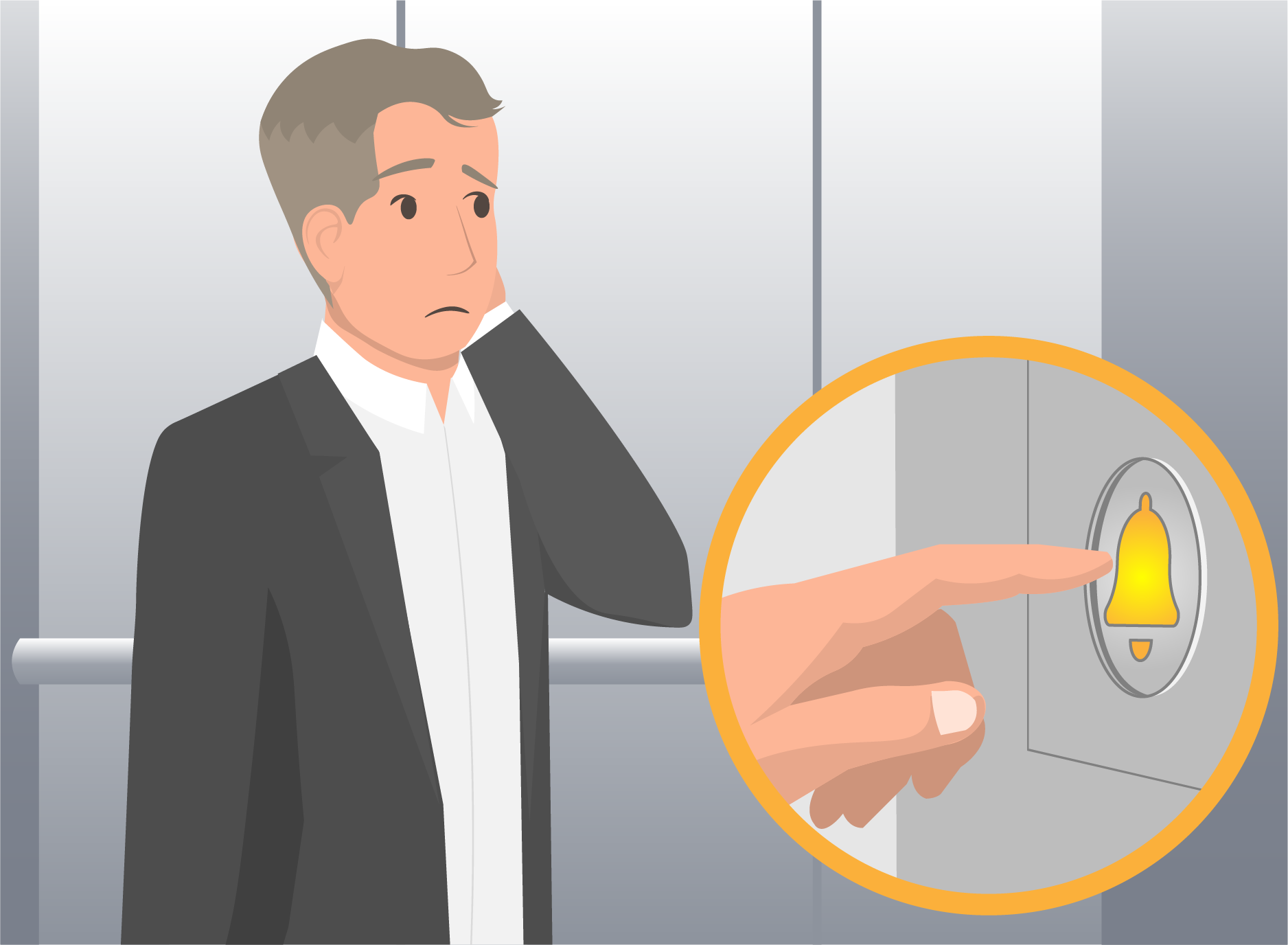 , Zwischentitel:
An elevator gets stuck, Text:
, Zwischentitel:
An elevator gets stuck, Text:
Mr. Schmidt is in the elevator on his way to the 4th floor when the elevator suddenly jerks and comes to a standstill. He has not yet reached the desired floor and even when he presses the various buttons for the different stories, nothing happens. Feeling disconcerted, he presses the button with the yellow bell.
- Bild:
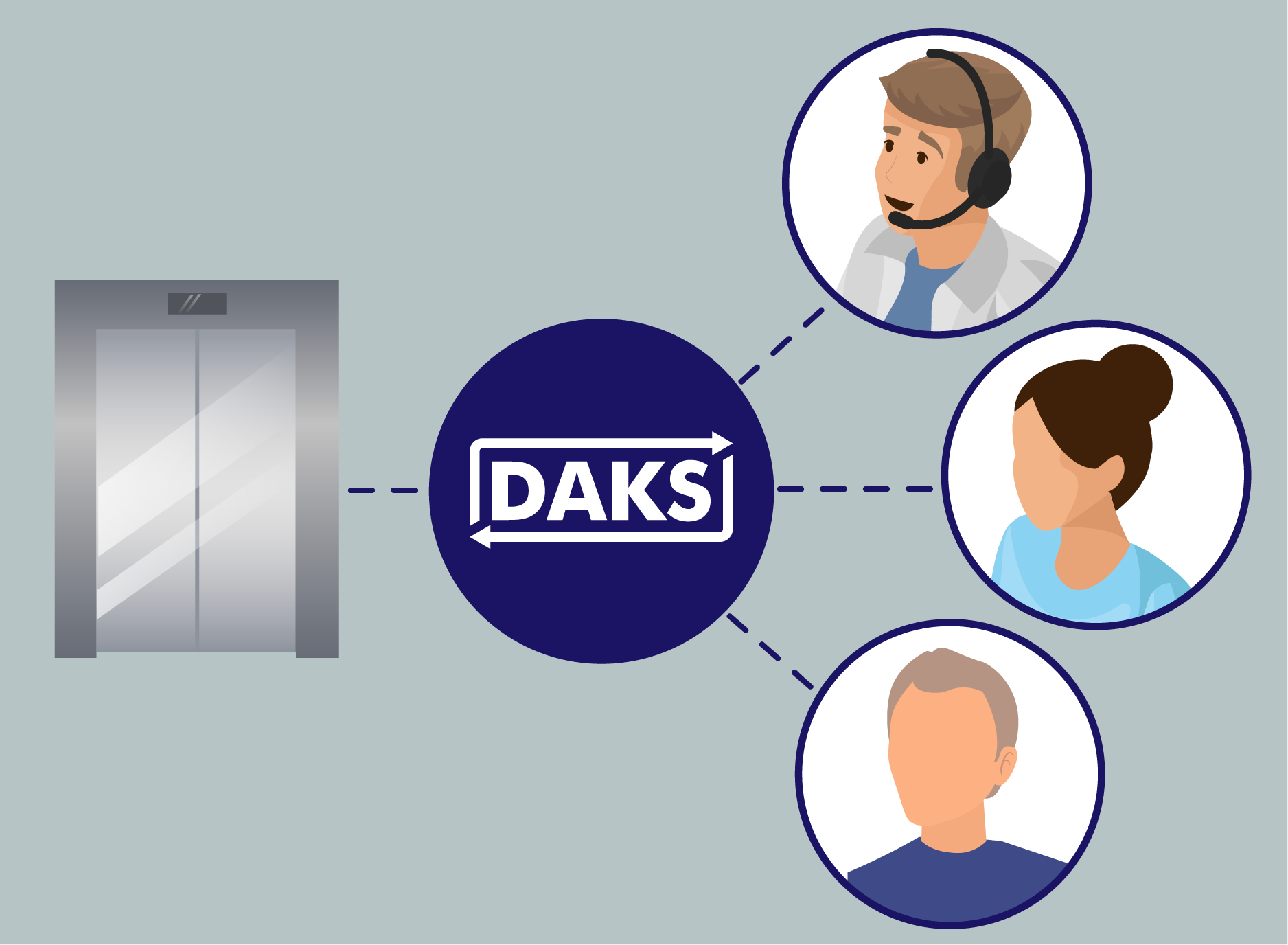 , Zwischentitel:
The emergency plan is triggered automatically, Text:
, Zwischentitel:
The emergency plan is triggered automatically, Text:
Numerous processes are set in motion via the DAKS alarm server when the elevator emergency call button is pressed. A direct voice connection is established between Mr. Schmidt and the company's internal emergency call center, which is manned around the clock. Mr. Schmidt is immediately much more reassured when a friendly voice answers and assures him that help is on the way.
In addition, other responsible persons are contacted by telephone and informed via a short announcement that there is a person trapped in elevator 3. If someone does not pick up the phone, DAKS considers deputy regulations and escalates the call to further contact persons in question.
- Bild:
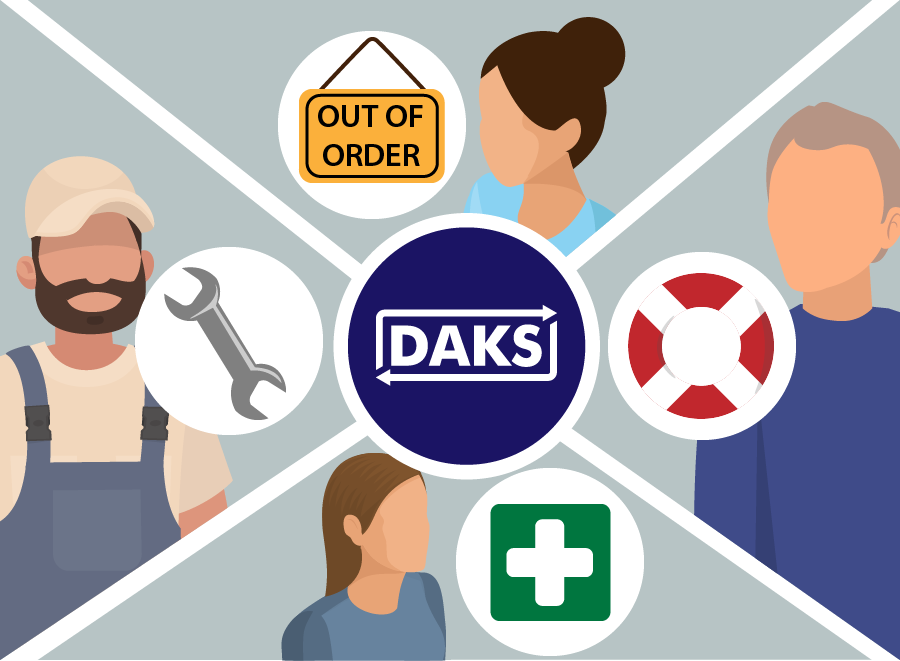 , Zwischentitel:
DAKS enables constructive cooperation, Text:
, Zwischentitel:
DAKS enables constructive cooperation, Text:
If desired, all responsible parties can be connected in a conference with the emergency call center and Mr. Schmidt. This helps the participants to discuss what measures need to be taken:
- The in-house elevator attendant will take care of freeing Mr. Schmidt.
- The external elevator technician sets out to repair the faulty elevator.
- The first responders get ready to attend to Mr. Schmidt after his rescue from the elevator car.
- The receptionist makes sure that the elevator is not being used by other people. Until the elevator is back in full swing, the receptionist places an "Out of Order" sign on the elevator.
- Bild:
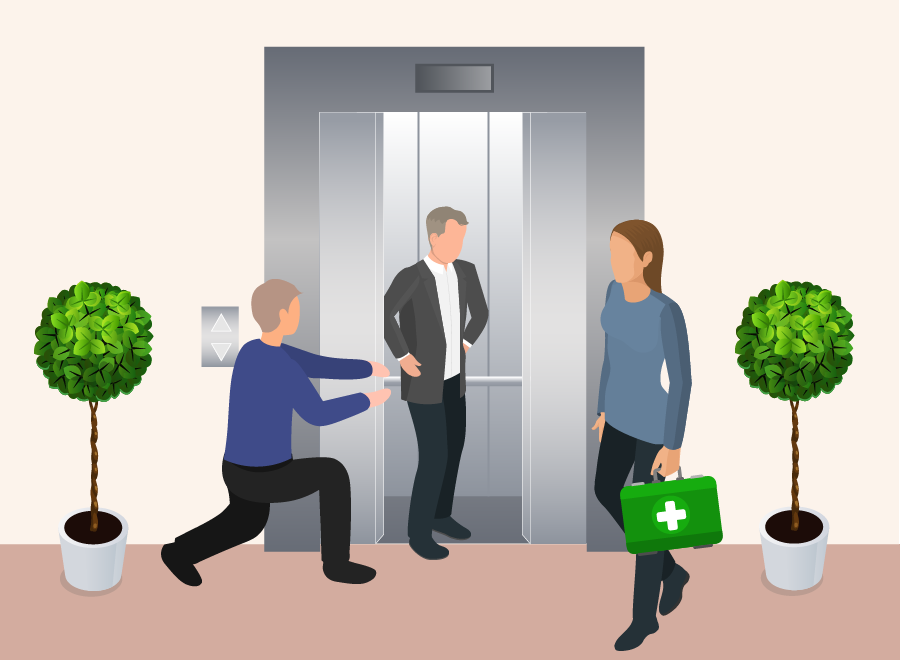 , Zwischentitel:
Mr. Schmidt is rescued quickly, Text:
, Zwischentitel:
Mr. Schmidt is rescued quickly, Text:
After several minutes, Mr. Schmidt is back on solid ground. The in-house elevator attendant was able to move the elevator from the operating portal to the next level and then open the doors manually. As soon as the elevator technician arrives, he can take a closer look at the shut-down elevator and ensure that it will soon be functioning again smoothly. Fortunately, Mr. Schmidt only had a mild shock and he is quickly up and about again thanks to the first responders.
- Bild:
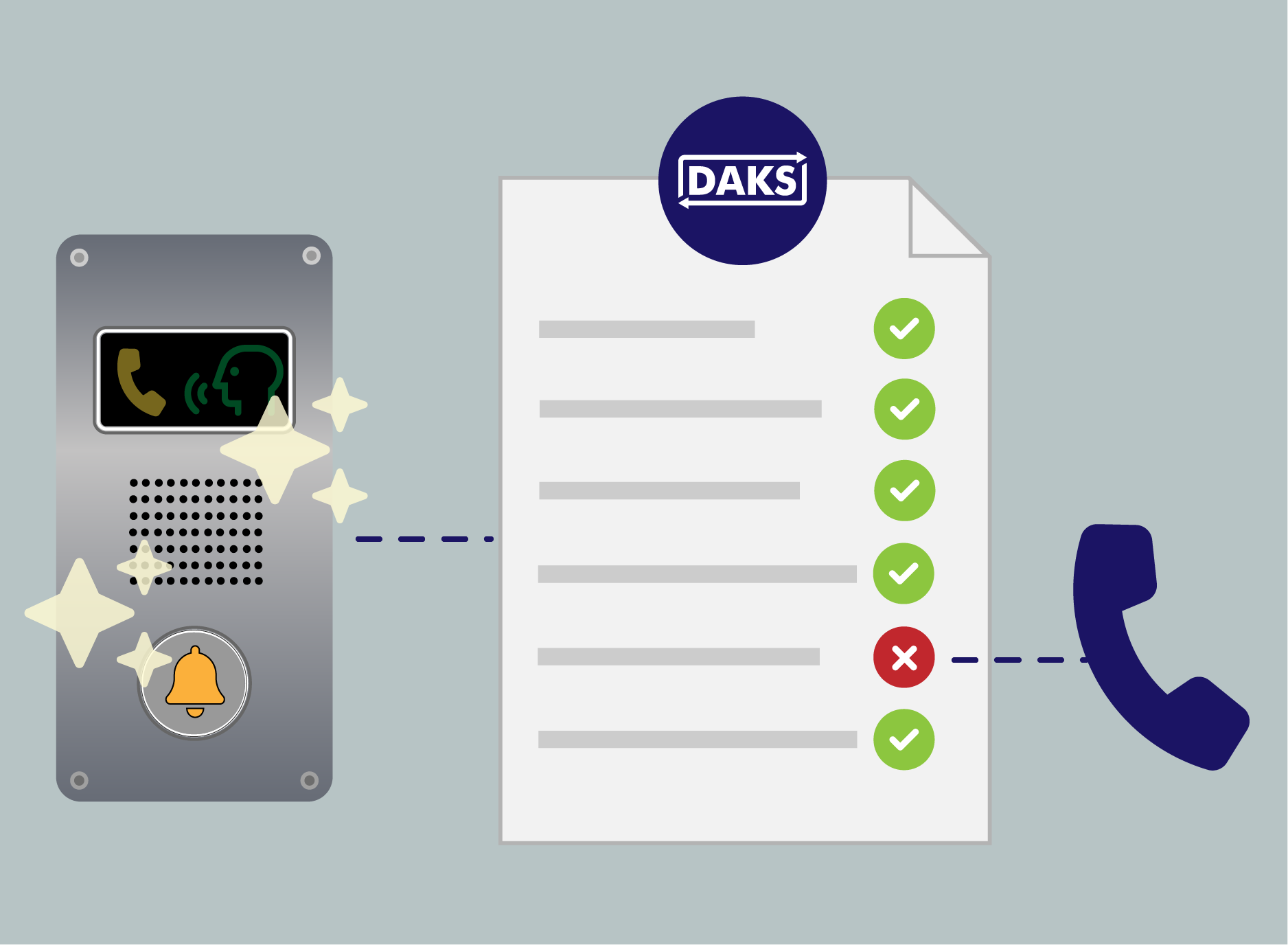 , Zwischentitel:
The elevator emergency call checks itself, Text:
, Zwischentitel:
The elevator emergency call checks itself, Text:
Unfortunately, it is impossible to rule out the eventuality of getting stuck in an elevator. However, to ensure that the emergency plan can run smoothly, the functionality of the elevator emergency call must be checked regularly. DAKS can do this on a daily basis for both analog and digital intercom terminals. In the event of a negative test result, DAKS automatically calls a service technician who can then carry out repairs.
- Verlinkte Artikel:
A nightmare: You're stuck in the elevator and no one answers the emergency button. Is the button not working? Or is no one available right now?
When stuck in an elevator, it is crucial that someone reliably answers the emergency call and that help is provided quickly. Today, it is a regulatory requirement that elevators are equipped with emergency call systems that are connected to a receiving office that is staffed 24/7. In addition, the proper functionality of the installed emergency call system must also be checked regularly.
A defective elevator entails many tasks: People who are currently in the elevator must be rescued and cared for both during and after their rescue. In addition, other people in the building must be informed that the elevator is unusable, and finally, the affected elevator must also be repaired as quickly as possible. How do you ensure that everyone involved can be reached safely so that they can act in a timely manner?
- Untertitel:
Why hospital and nursing staff need special protection
- Teasertext:
Certified personal security in hospitals and the care sector
- Titel:
Benefits of personal security with DAKS
- Vorteile:
- Bild:
 , Zwischentitel:
Increase security for employees, Text:
, Zwischentitel:
Increase security for employees, Text:
- Employees know that they can rely on the safe alerting with DAKS and they can be sure of quick help in any case.
- Employees are more satisfied and downtimes are reduced.
- DAKS ensures that the right helpers arrive at the right place at the right time.
- Bild:
 , Zwischentitel:
Increase security for those responsible, Text:
, Zwischentitel:
Increase security for those responsible, Text:
- As a certified personal alarm signal system (PNA, according to the German DIN VDE V 0825-1), DAKS-PNA supports the management in fulfilling their duty of care towards the employees and to ensure personal security in compliance with the German DGUV-112-139 in accordance with labour law requirements.
- This makes jobs more attractive and enhances the positive reputation of the institution.
- Bild:
 , Zwischentitel:
Better evaluability, Text:
, Zwischentitel:
Better evaluability, Text:
- DAKS enables repeatable emergency exercises that can be automatically documented and thus optimally analysed.
- DAKS provides a detailed logging of all alarm processes and thus supports the complete documentation of all emergency situations or even emergency exercises that have arisen. This provides an effective basis for the optimization of processes, but also for legal certainty.
- Titel:
This is how you can better protect healthcare workers
- PS Elemente:
- Bild:
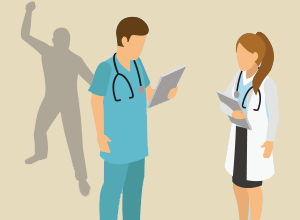 , Zwischentitel:
Staff in healthcare need protection, Text:
, Zwischentitel:
Staff in healthcare need protection, Text:
The high aggression potential of some patients requires effective de-escalation strategies as well as structural, personnel and organisational security precautions. Nevertheless, it happens that employees are exposed to physical attacks, sometimes involving severe violence. In situations like these, personal protection, well-prepared emergency procedures and fast help are essential!
- Bild:
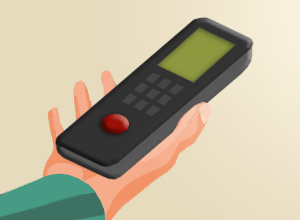 , Zwischentitel:
A single push of a button starts a complex help process, Text:
, Zwischentitel:
A single push of a button starts a complex help process, Text:
Employees, such as nursing staff, who come into contact with potentially dangerous patients wear a suitable communication terminal on their bodies. When an acute hazard situation arises, the wearer of the device can initiate a prepared emergency call via a user-friendly red alarm button, which DAKS automatically converts into various parallel processes.
- Bild:
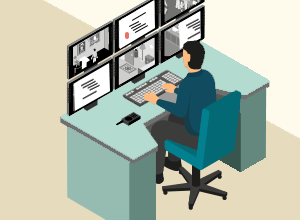 , Zwischentitel:
The entire process is monitored at the control center, Text:
, Zwischentitel:
The entire process is monitored at the control center, Text:
The alarm is routed to the control center, which can now monitor the entire process. In combination with suitable end devices, DAKS can also automatically activate their microphones. Thus, the control center can listen into the situation and also consult with the alarm activator through an optional hands-free function.
- Bild:
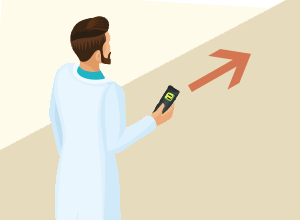 , Zwischentitel:
Helpers get information about location and type of incident, Text:
, Zwischentitel:
Helpers get information about location and type of incident, Text:
At the same time, the alarm initiator is located and his position is graphically displayed on the monitor of the control center including a building plan. An automatic broadcast call is started to a predefined helper group consisting of colleagues and security forces. Precise information about the person, location and type of incident is transmitted simultaneously and displayed as a message with the broadcast call. The person affected is also informed that help has been ordered and will arrive immediately.
- Bild:
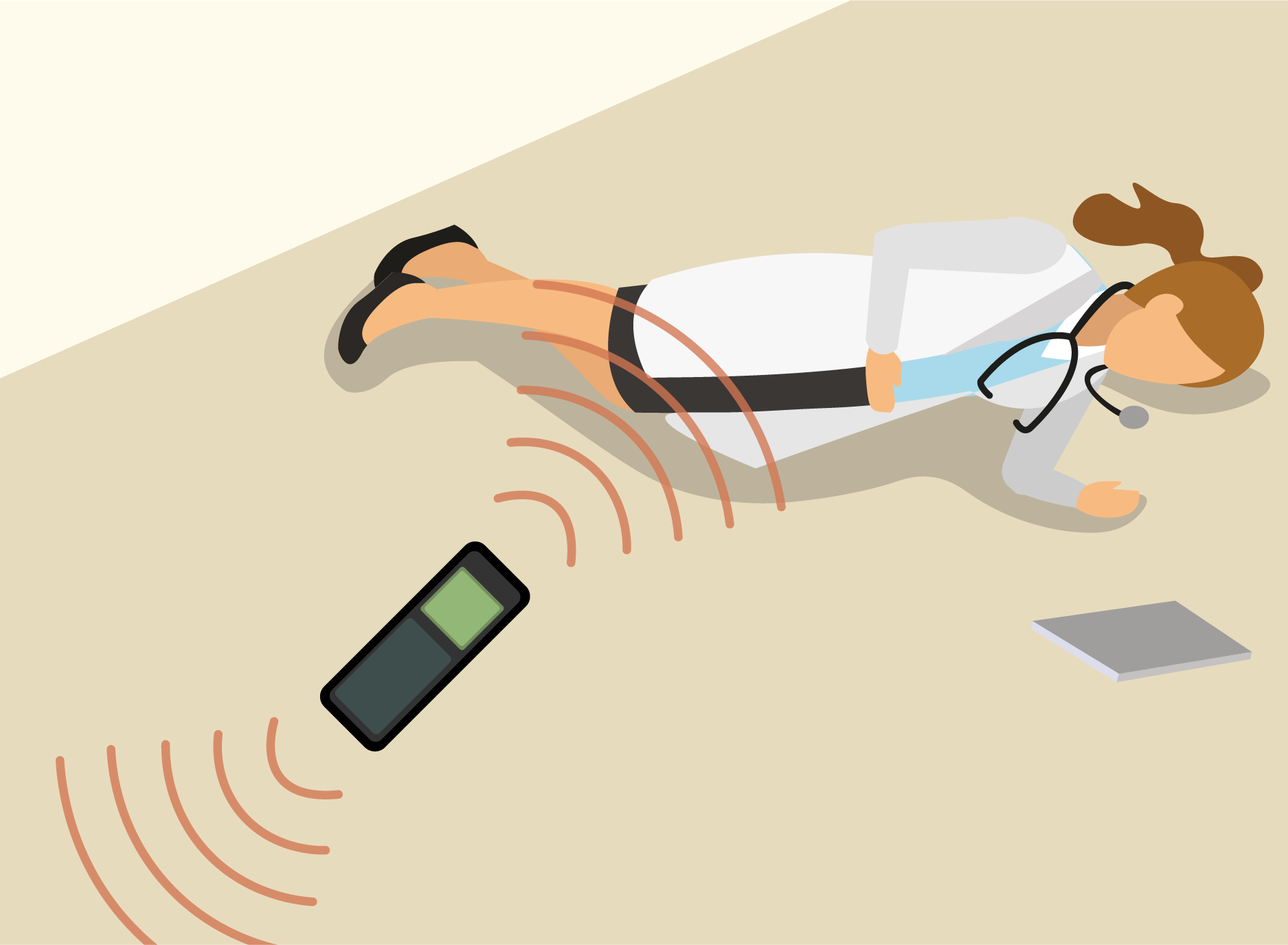 , Zwischentitel:
Sensors protect even when the user is unable to call for help, Text:
, Zwischentitel:
Sensors protect even when the user is unable to call for help, Text:
If, for certain reasons, the person affected is (no longer) able to initiate an emergency call himself, appropriate personal emergency signal devices automatically detect up to ten typical signs of a hazard situation and pass these on to DAKS according to previously defined criteria. DAKS initiates suitable, precisely predefined alarm processes for every emergency due to specific movement patterns - from complete immobility or escape up to typical defensive movements - but also other triggers, such as a lying position or the loss of the device (signalled by a break-off contact).
- Verlinkte Artikel:
Employees of healthcare facilities see themselves frequently exposed to an overall aggressive behaviour. This also includes occasional violent physical assaults. Especially professionals in psychiatric clinics, institutions for the handicapped, retirement or nursing homes, geriatric centers and emergency departments must constantly anticipate that sooner or later, a patient or one of their relatives will commit an act of violence onto them.
It therefore belongs to the duties of responsible employers to take all measures necessary, not only to fulfill their legal requirements and regulations when it comes to the protection of their employees, but also to prevent all psychological stress this may entail. For this strain is apt to result in cost-intensive sick leave or even to force staff into giving up their profession altogether. The use of personal emergency handsets in combination with a powerful alarm system is optimally suited as safety precaution as well as for the practice of emergency procedures.
, Zwischentitel: Relieving the burden on nursing staff, Text:
, Zwischentitel: Faster and more appropriate help for the patients , Text:
, Zwischentitel: More efficiency and security for the clinic, Text:
 , Zwischentitel:
Her patient needs constant monitoring, Text:
, Zwischentitel:
Her patient needs constant monitoring, Text:
 , Zwischentitel:
Wherever she is – she receives every alarm relevant to her, Text:
, Zwischentitel:
Wherever she is – she receives every alarm relevant to her, Text:
 , Zwischentitel:
She has many patients – and everything under control, Text:
, Zwischentitel:
She has many patients – and everything under control, Text:
 , Zwischentitel:
She knows exactly when and where action is required, Text:
, Zwischentitel:
She knows exactly when and where action is required, Text:
 , Zwischentitel:
But what if she is currently tied up?, Text:
, Zwischentitel:
But what if she is currently tied up?, Text:
 , Zwischentitel:
Then DAKS simply forwards the task to another nurse, Text:
, Zwischentitel:
Then DAKS simply forwards the task to another nurse, Text:




















